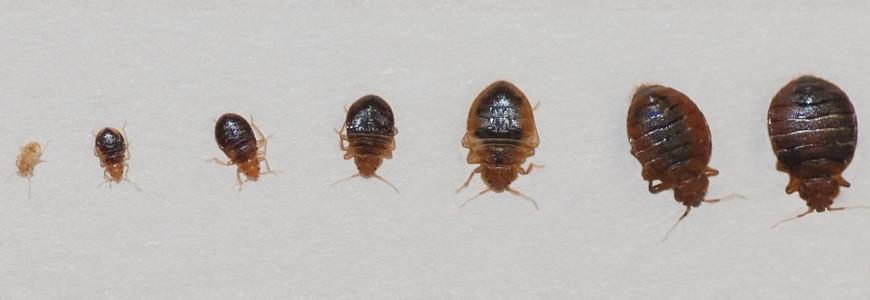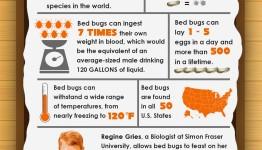 If anyone knows bed bugs, it’s University of Kentucky entomologist Michael Potter. He’s been studying the blood-sucking parasites for much of his adult life. According to Potter, bed bugs were a common phenomenon in 20th century homes. In those days, it was normal for people to regularly check their possessions for the presence of bed bugs, and even to carry insecticide when travelling.
If anyone knows bed bugs, it’s University of Kentucky entomologist Michael Potter. He’s been studying the blood-sucking parasites for much of his adult life. According to Potter, bed bugs were a common phenomenon in 20th century homes. In those days, it was normal for people to regularly check their possessions for the presence of bed bugs, and even to carry insecticide when travelling.
But the bugs virtually vanished between the 1950s and 1990s, becoming so rare that people eventually forgot what they looked like. Potter believes the introduction of powerful pesticides was responsible for the reduction in bed bug numbers in developed countries. After World War II, the chemical dichloro-diphenyltrichloroethane (DDT) was applied liberally across the world, almost driving the creatures to extinction.
The once ubiquitous bed bug faded into history, lost to our consciousness and remembered only in the rhymes that parents told their children at bedtime.
“Good night, sleep tight. Don’t let the bed bugs bite!”
But now in the 21st century, the bed bugs have returned with a vengeance, crawling into our homes, hotel rooms and public transportation systems. It’s time to start taking them seriously again.
There are several reasons behind the reawakening of our old adversary. Some of the world’s most powerful insecticides have been banned, and bed bugs have developed a resistance to less effective modern pesticides. We also travel more frequently, unknowingly carrying the pests between buildings, across cities, and over international borders. And because the bugs were absent for so long, the current generation of pest controllers often lack the knowledge or equipment to eradicate them.
So how can we protect ourselves? How do we prevent these creatures from invading our couches and beds, and feeding off our blood while we sleep? The first step is to know your enemy. You need to be able to identify bed bugs and their tell-tale signs.
Bed bugs are small and flat, with an oblong shell and tiny head. They’re normally a reddish brown colour, and you’ll typically find them in places where humans sleep. They don’t build nests or form colonies, but they do like to congregate in mattress seams, headboards and bed frames. You can also look out for dark spots of blood on your sheets, or the yellowish skins that the bed bugs shed. You may even discover the bugs in dressers, or among general household clutter.
Unlike fleas and ticks, they don’t attach to your body while feeding. They take a bite and then scuttle away to hide and digest your blood. They need to feed about once a week to survive. According to Potter, they’ll even adapt to your routine. If you work night shifts, they suck your blood during the day.
While feeding, bed bugs inject saliva into your bloodstream, which works as an anti-coagulant.
The bites appear as itchy raised welts or blisters, causing severe reactions in some people, although others don’t even notice they’ve been bitten. Unfortunately this helps spread the infestation, because victims often don’t realise the bugs are present. Fortunately, they don’t transmit disease.
Bed bugs are more prevalent in metropolitan areas – anywhere humans gather in close proximity. People usually introduce an infestation to their home after they’ve travelled to a location with bed bugs, especially to places where humans sleep. And once you’ve got them, it’s very difficult to get rid of them.
There’s a stigma that only dirty homes are at risk, but this is a myth. In contrast to vermin, flies or cockroaches that thrive on filth, bed bugs simply want your blood. Cleanliness is irrelevant, and the parasites have been discovered in even the world’s most exclusive hotels.
If you really want to get rid of bed bugs today try SayByeBugs! It was developed as a safe and highly effective alternative among a sea of products that rarely deliver on their promises.








3 Comments